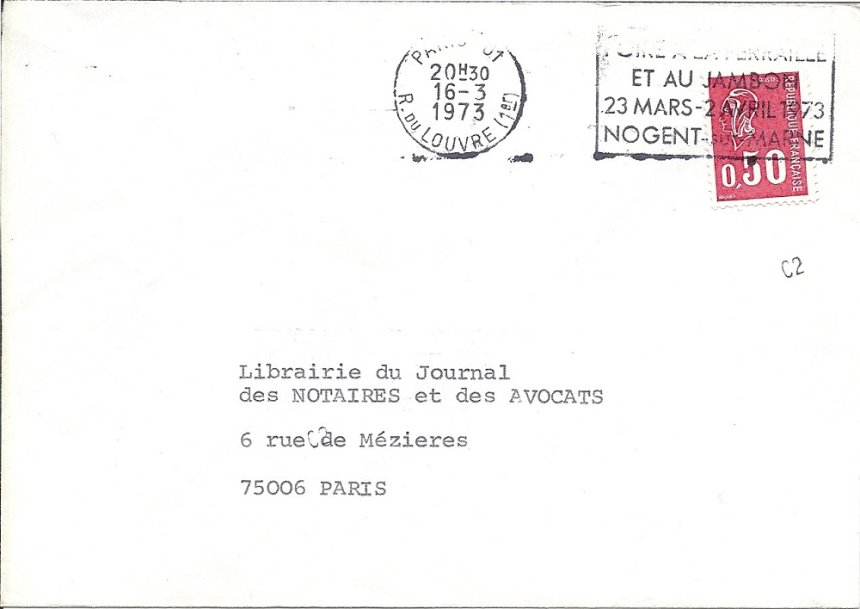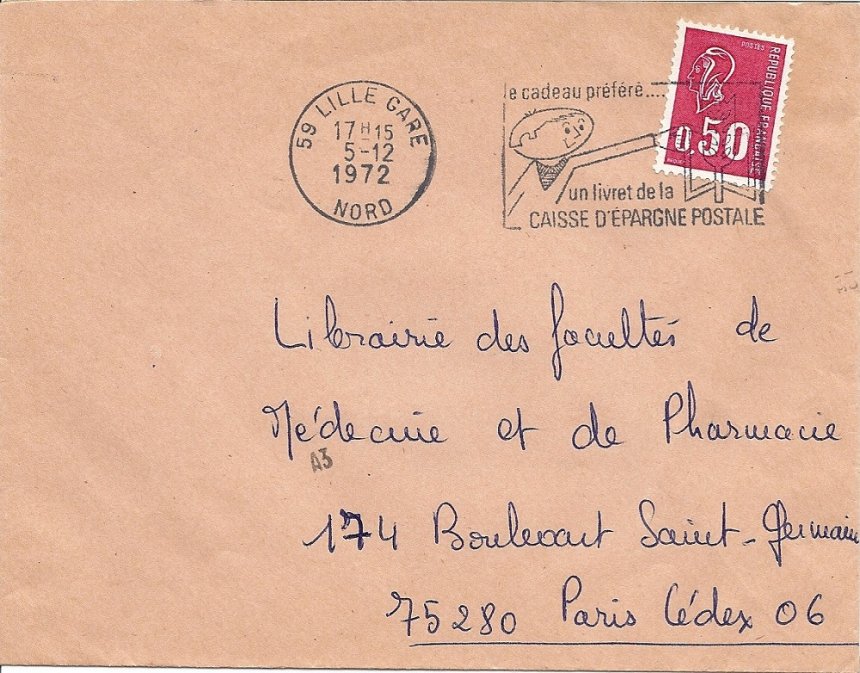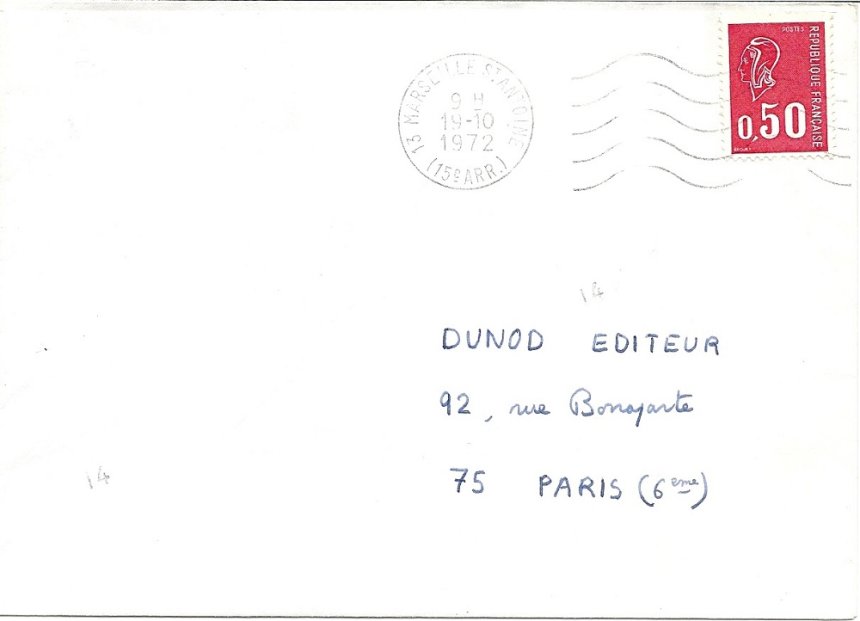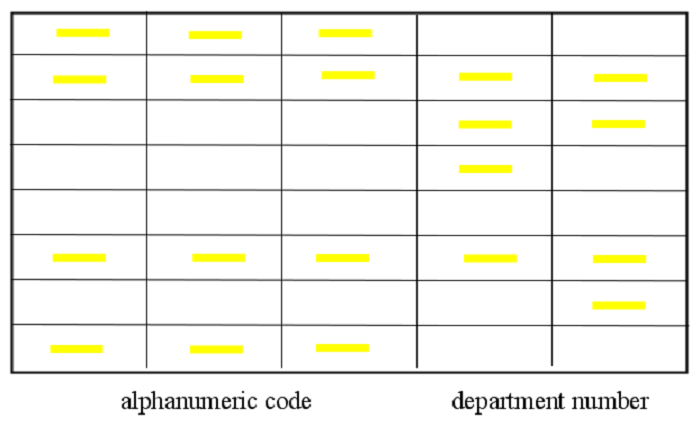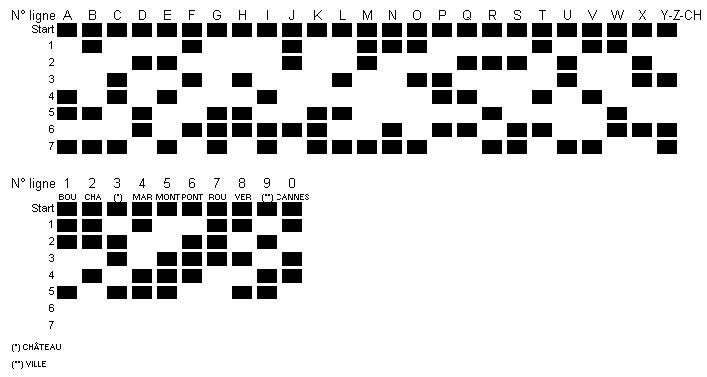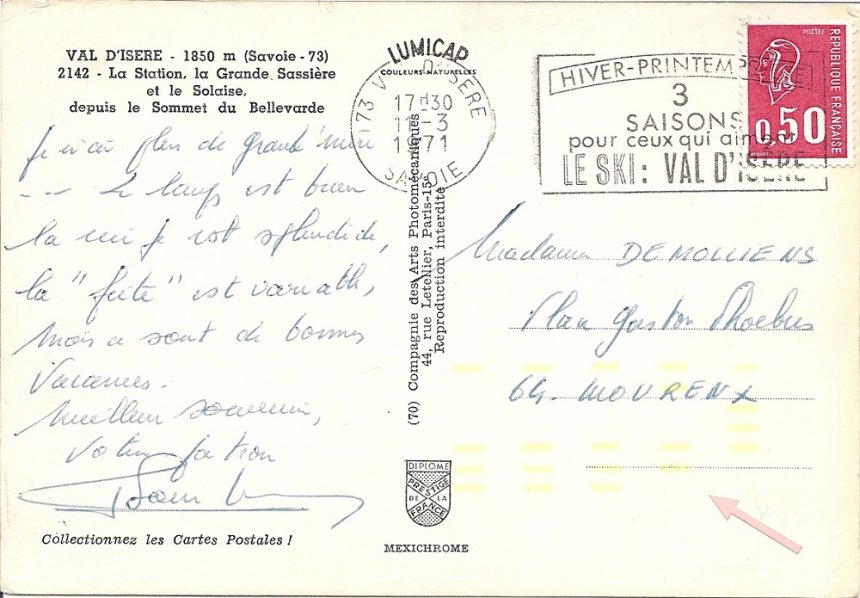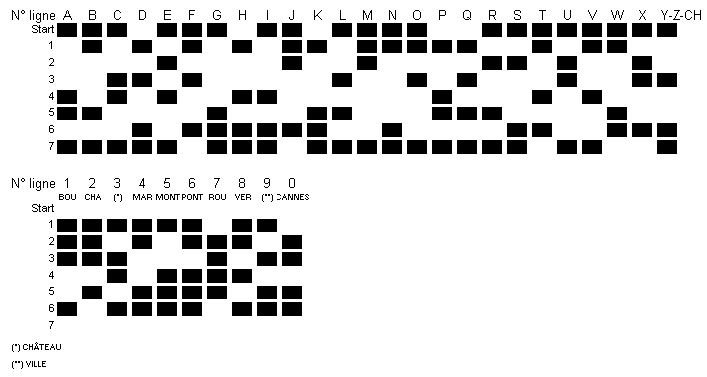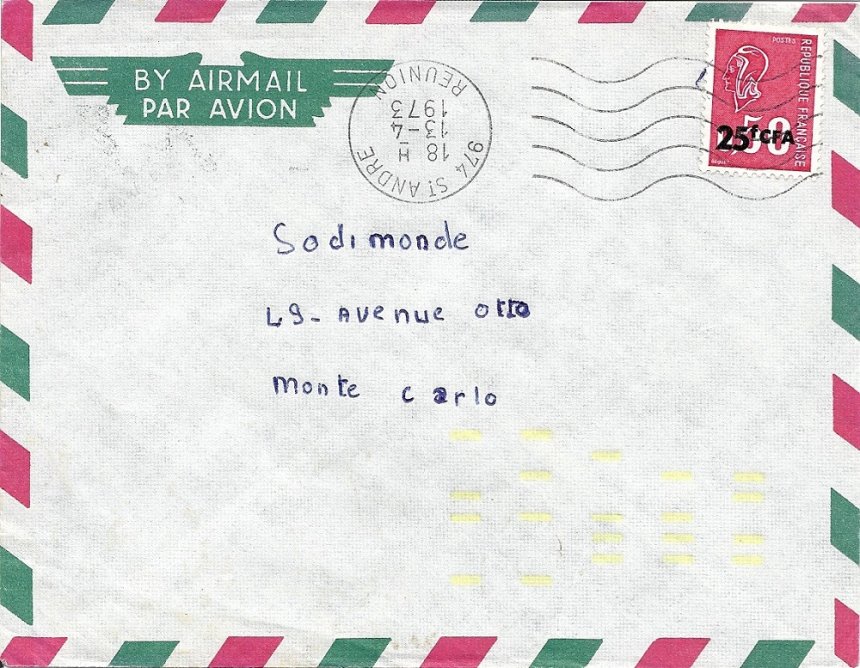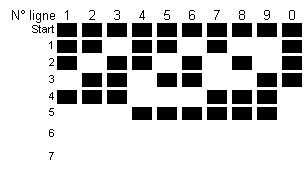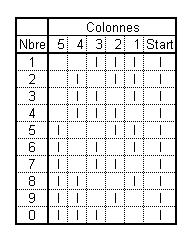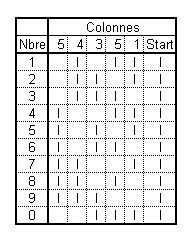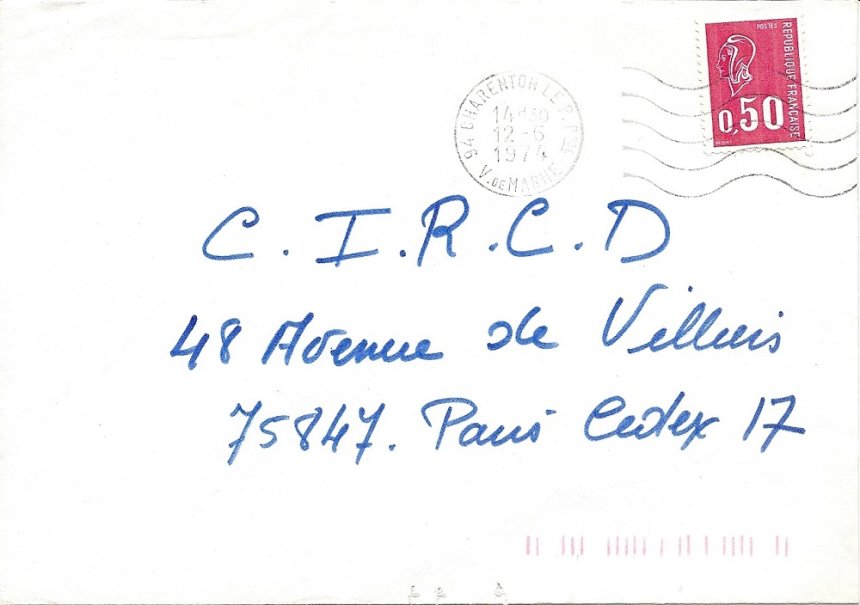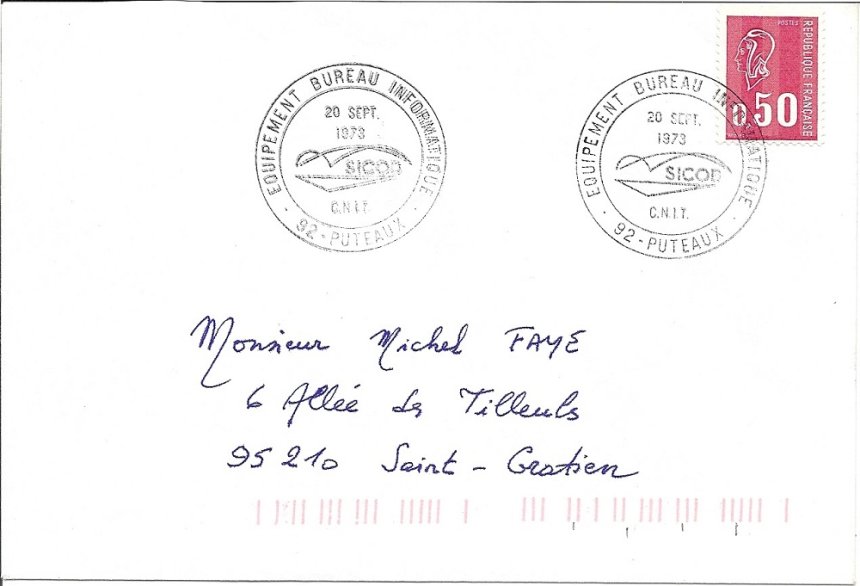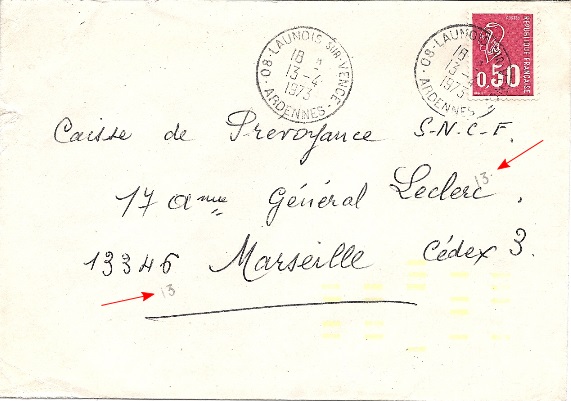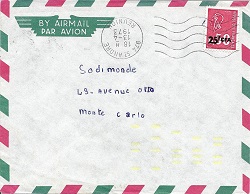
Introduction
To improve its productivity, the PTTs chose to automate mail sorting in the 1960s. Without getting into technical detail, a sorting machine is made of a set of indexing stations and of a set of sorters. Two different techniques were implemented: direct sorting and delayed sorting.
Direct sorting
In a direct sorting machine, every indexing station is directly connected to all the compartments of the sorter. It may be noted that the information needed to sort is lost after the sort. From 1959, the PTTs have been equipped with direct sorting machines manufactured by Hotchkiss-Brandt. When envelopes pass through sorting machines, a mark called Mechanical Sorting Mark ( M.T.M. in French) is positioned according to a diagonal line. Two major periods have existed: a first one with dry printed marks on the back of covers from 1959 to 1970 (thus not able to be found with a stamp of the type Marianne de Béquet) and a second one with inked marks printed on the front of envelopes from 1970, on a diagonal between the lower left and the upper right corner of the envelope.
The first tests of inked marks (sometimes called wet marks) were carried out in 1967 in the Paris-Brune postal sorting centre with the use of the figure “01”. From the end of 1969, this marking was generalized on all the machines of the relevant sorting centers. Every sorting machine was identified by a letter (A, B, C, E, G, H or I) and each of the six indexing stations of a sorting machine by a figure from 1 to 6.
- The Paris R.P. rue du Louvre sorting centre: two sorting machines were installed in this centre, one printing the letter B and the other one printing the letter C, from November, 1970 to June, 1976.
- The Paris-Brune sorting centre: two machines were based in this centre from the end of 1969 to May, 1972, printing letters E and G.
- The Lille-Gare sorting centre: a sorting machine worked from December, 1970 to September, 1979 and printed the letter A.
- The Marseille-Gare sorting centre: two machines operated in this centre from May, 1972 to April, 1981, printing letters H and I.
A curiosity to end this section:
Delayed sorting
In a delayed sorting machine, indexing stations are independent of sorters. During the passage of an envelope, an operator prints on the envelope a permanent code which can be later used by one or several sorters.
This permanent code takes the form of indexation marks called Electronic Sorting Marks ( M.T.E. in French) and printed on the front of covers. Experimented since 1962, this technique evolved a lot, as eight indexation codes were tested. Only five of them can be found on mail with a stamp 0,50 F Marianne de Béquet.
Vertical Codes with yellow dashes
This coding is made of five columns of four fluorescent yellow 1mm by 5mm dashes. A two symbols dry mark can generally be found under the 2nd left column allowing to determine the indexing station.
It should be noted that the coding is written from right to left.
Here is a coding using the P.L.M. code:
Three different codes have existed between 1971 and 1978:
- The Austerlitz 2 code
This code seems to have been used from April, 1969 to May, 1971.
- The P.L.M. code (and its digital variant Arcueil 1)
This code was used from October, 1969 to July, 1975, in the Paris-P.L.M. sorting centre, from the end of January, 1971 to July 31, 1973 in the Arcueil sorting centre and from June, 1971 to October, 1974 in the Clermont-Ferrand sorting centre.
- The Arcueil 2 code
This code was used from March 4, 1974 to the end of July, 1974 in the Arcueil sorting centre and from October 10, 1974 to ? for the Clermont-Ferrand sorting centre.
Horizontal Codes with rose/orange dashes
This coding is made of 5 packages of four vertical rose/orange fluorescent lines (on six possible), every “package” beginning with a “start” line. Coding (and thus reading) is also written from right to left. We can see below the coding of 42100 (Saint Etienne) using the La Source 2 code:
At the beginning, only routing indexations were printed at the bottom right of the envelope, on the form of 20 vertical sticks. Two different codes existed:
- La Source 1 code
This code was used from March 15, 1973 to March 24, 1974 in the Orléans-La Source sorting centre and from February, 1974 to April, 1974 in the Arcueil sorting centre.
- La Source 2 code
This code was first used in the Orléans-La Source sorting centre since March 25, 1974 and then, gradually, in all automated sorting centres in France.
Since March, 1974, we also find distribution indexations marks at the bottom left of the envelope, in the form of 19 vertical sticks.
To end this section, here is an envelope with a double indexation, direct and delayed:


